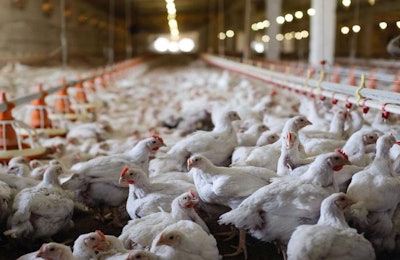
The U.S. poultry industry faces a brave new world of animal healthcare and stewardship as the Veterinary Feed Directive (VFD) takes effect at the end of 2016. With the cessation of medically important growth promoters in food animal production, poultry producers are moving towards greater emphasis on treatment and control of disease.
Both the Centers for Disease Control and Prevention and the World Health Organization have declared antibiotic resistance to be one of the most serious problems facing our national and global health systems.
But the VFD is only a small part of the changing world of poultry healthcare. Big investors have joined non-governmental organizations (NGOs) in pushing for further reductions in the use of antibiotics in food production animals.
What’s more, the federal government’s National Action Plan for Combatting Antibiotic Resistant Bacteria (CARB) and the President’s Advisory Council (PACCARB) have the momentum to continue to change the underpinnings of poultry healthcare.
The President’s Advisory Committee recently released Draft Report 1, which assesses progress of the National Action Plan, which includes the following:
- Goal 1: Slow the emergence of resistant bacteria and prevent the spread of resistant infection
- Goal 2: Strengthen national One Health surveillance efforts to combat resistance
- Goal 3: Advance the development and use of rapid and innovative diagnostic tests for identification and characterization of resistant bacteria
- Goal 4: Accelerate basic and applied R&D for new antibiotics, other therapeutics and vaccines
- Goal 5: Improve international collaboration and capacities for antibiotic-resistance prevention, surveillance and control and antibiotic R&D
Here’s the big question: Will the changes in poultry production in the way antibiotics are used – or not used – result in a reduction of resistance? The answer may be far less certain than the policymakers and the advocates would have us believe. They define responsible use of antibiotics in animal food production in some pretty simplistic ways. Mostly, it involves not using medically important antibiotics in animal production.
Certainly experience with fluoroquinolone resistance in Campylobacter after the removal of Enrofloxacin in poultry in the U.S. doesn’t support their certainty. The resistance has continued its increase. And there are other real-world examples that cast doubt on the efficacy of the policy.
Federal policymakers and the poultry industry need research and data to inform policy and production practices. The poultry industry needs to stay involved in the One Health approach and step up the dialogue with regulators and human health experts. It also needs to press for more funding, for development diagnostics and therapeutics. Let’s not continue to experiment with policy. Instead, base future policy on data and knowledge.
















